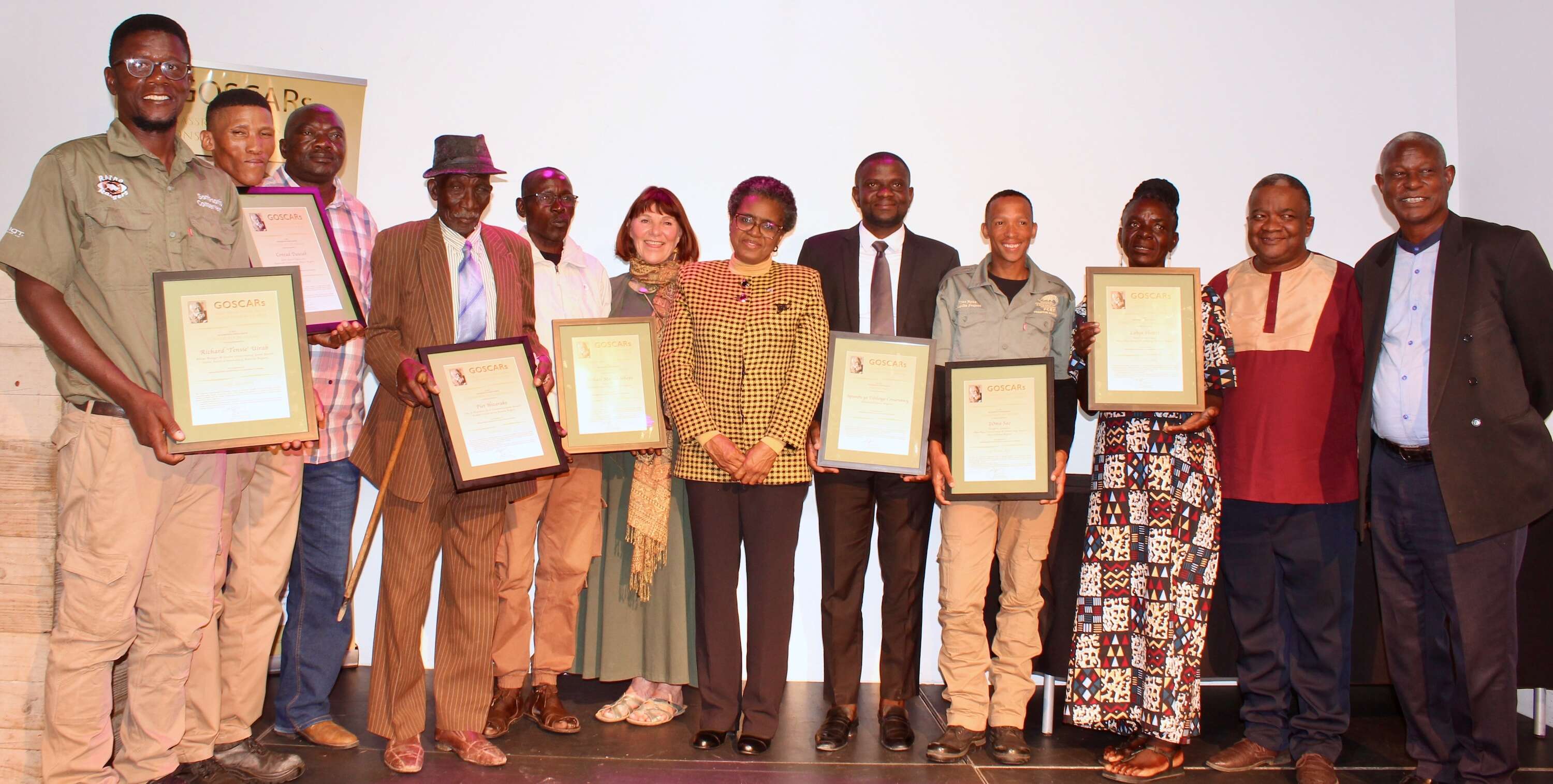
Namibia's internationally acclaimed community-based natural resource management (CBNRM) programme had humble beginnings. In the midst of a poaching crisis triggered by drought and characterised by political unrest during the 1980's, a small group of community members were appointed by farsighted traditional leaders to conserve their wildlife.
First in the Kunene Region and later in the Zambezi Region, these dedicated individuals became the eyes and ears of nature conservationists and started planting the first seeds of community-based conservation. In these early days, Garth Owen-Smith and Margaret Jacobsohn shared their vision with communities – one that was unthinkable under the apartheid regime at the time – that they could one day gain the rights to manage and legally benefit from their natural resources.
Establishing the GOSCARS
Since the passing of Garth Owen-Smith in 2020, Dr Jacobsohn and others who worked alongside Garth organised an annual event called the Grassroots Owen-Smith Community Ranger Awards (GOSCARS). The funds are managed by the Namibian Chamber of Environment. The GOSCARS recognises the field rangers – known as game guards, environmental shepherds, field officers, natural resource monitors, fish guards, among other titles – that continue this legacy of community conservation.
The 2025 GOSCARS were awarded to six individuals and one conservancy that have shown exceptional dedication to community conservation. A panel of three judges – Dr Jacobsohn, Hon. Beaven Munali and Ronny Dempers – deliberates on each nomination sent in by individuals and organisations that work with community rangers and their conservancies, community forests and fisheries reserves. Hon. Beaven Munali started his conservation career as a game guard in Zambezi, rising through the ranks to become Assistant Director Zambezi of IRDNC, and then chairman of the Regional Council for Zambezi Region. Ronnie Dempers is the Executive Director of Namibia Development Trust and a former chair of the Namibian Association of CBNRM Support Organisations (NACSO). Alongside Dr Jacobsohn, these panellists understand the challenges of CBNRM and what it takes to work in the programme.
Each winner is awarded a prize of N$ 20,000, while their community-based organisation receives N$ 10,000. The Conservancy Award comes with a prize of N$ 100,000. The competition extends to community-based organisations, but this prize is only awarded for exceptional performance and is not necessarily given each year.
GOSCARS 2025 Winners – Conservation Elders
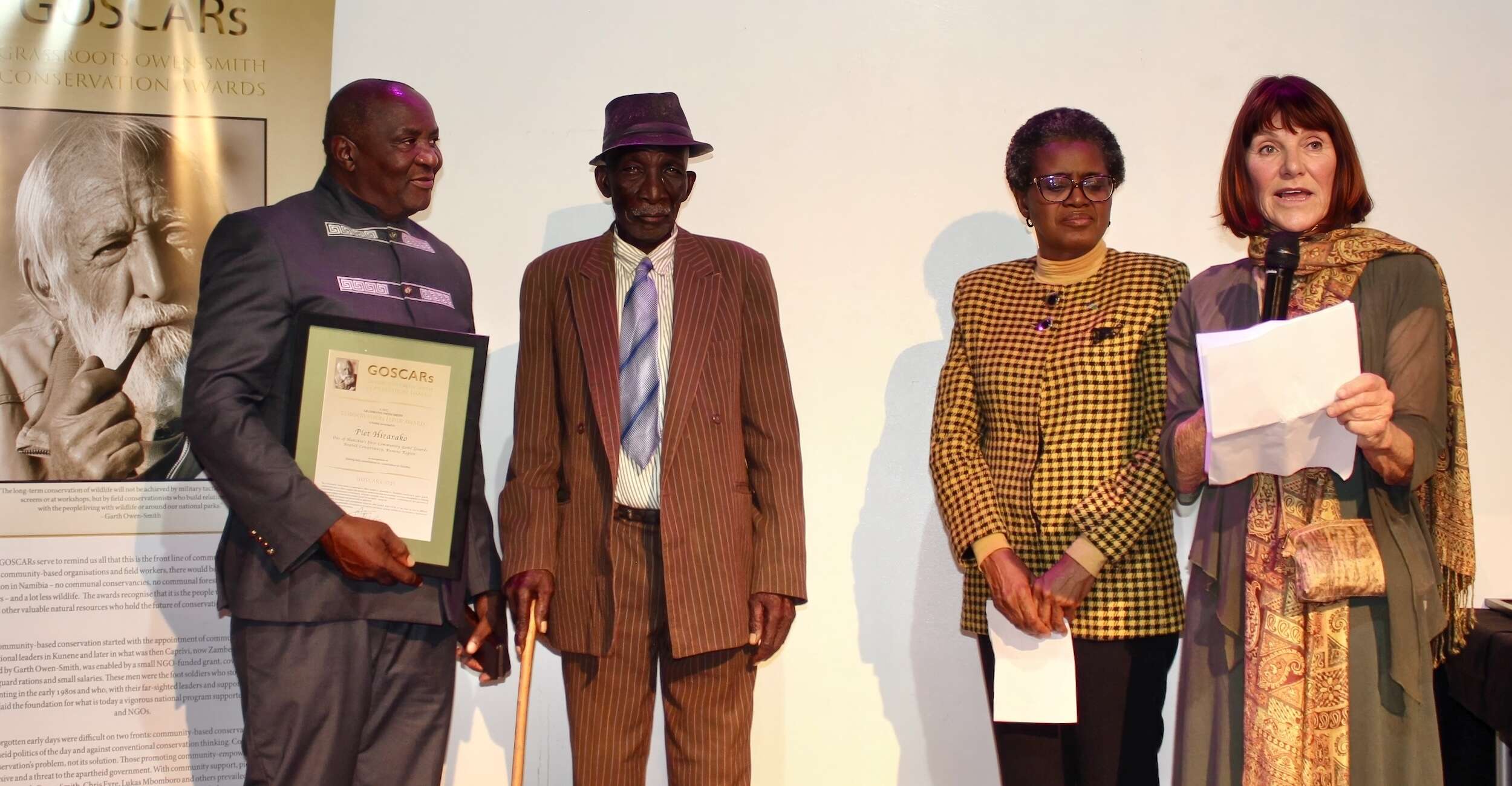
Piet Hizarako was one of the first community game guards to be appointed, and his story illustrates the revolutionary nature of CBNRM during its first years. As an elephant poacher, Piet knew every trick in the poacher's handbook for killing elephants and trading their tusks. Since the apartheid government's policies were seen as illegitimate and oppressive, poachers were the Robin Hoods of their communities – using the “government's animals” to provide for their families.
This all changed when the traditional leaders in Warmquelle (later included in Anabeb Conservancy) caught the vision of taking ownership of and responsibility for elephants and other wildlife, despite the government at the time. Piet was appointed as one of the first game guards and instructed to use his extensive knowledge of wildlife movements and poaching methods to track down and report poaching activity.
Even though they were unarmed (and remain so to this day), community game guards like Piet started to turn the tide on wildlife crime, as the remaining poachers realised that their activities were no longer supported by local communities. These methods still work, as demonstrated when Piet came out of retirement in 2012 to teach a new generation of game guards how to deter rhino poaching, which has once again been brought under control in the Kunene Region.
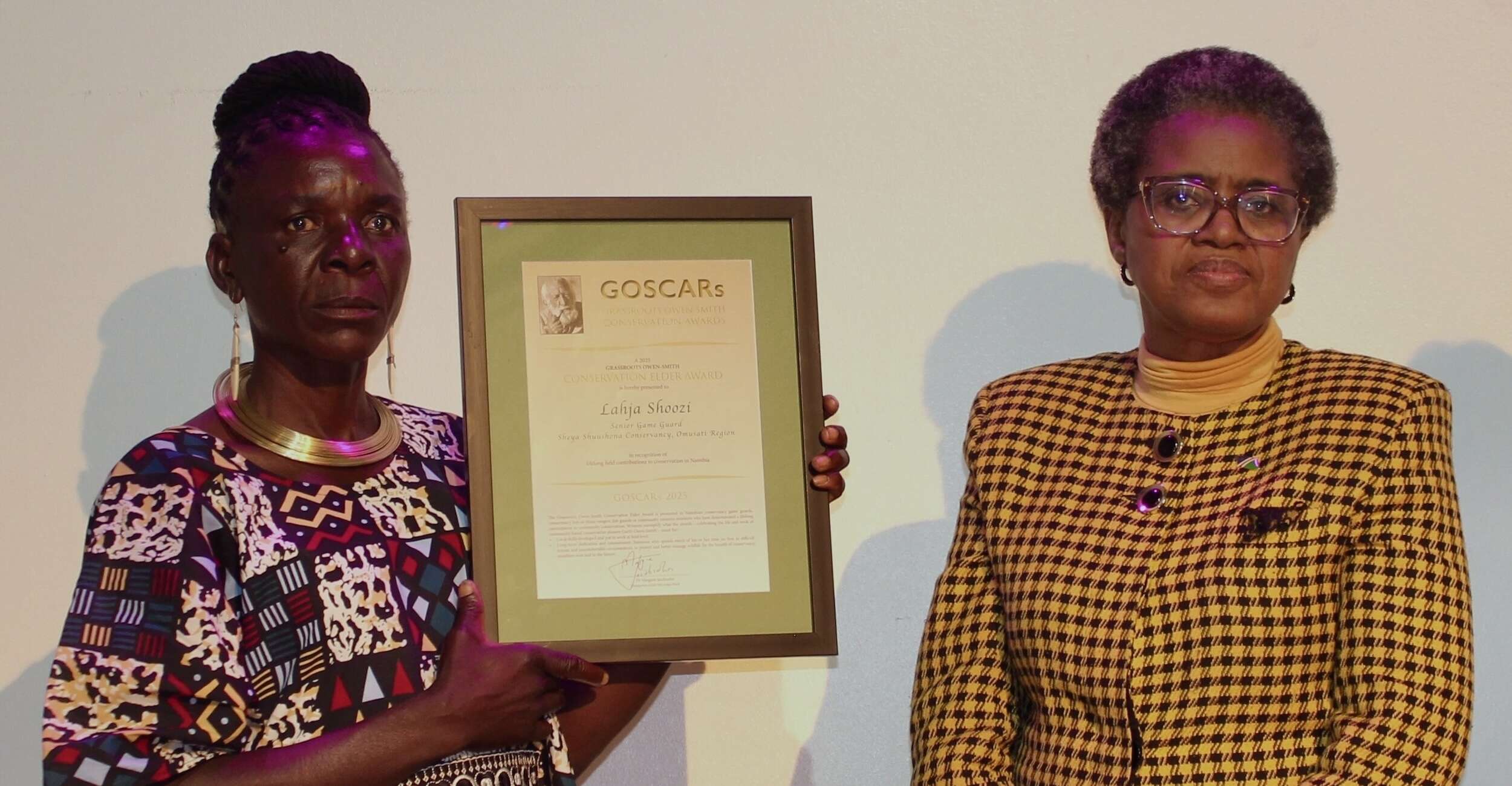
After Namibia gained independence in 1990, the way opened for the communities living alongside wildlife to realise their vision. In 1996, the Nature Conservation Ordinance of 1975 that granted white farmers on freehold land the rights to own and use wildlife was amended to include communities that were willing to establish communal conservancies.
Establishing a conservancy is hard work, as the majority of the people living in that area need to be made aware of the concept and be convinced that it is a good idea. They also need to establish their boundaries and develop institutional documents that will guide their operations. Lahja Shoozi caught the vision for her area and campaigned within her community to establish Sheya Shuushona Conservancy, which became a reality in 2005.
Lahja is now a senior game guard and her passion remains unwavering. She is known to walk 20 km in a day while out on patrol and holds the record for reporting on elephant poaching incidents. After witnessing three baby elephants fall into a reservoir, she helped to raise funds from the Community Conservation Fund of Namibia to build wildlife-friendly waterpoints. One of Lahja's key duties is to monitor conservation hunting in the conservancy to ensure that the hunting outfitter adheres to their contract and delivers tangible benefits to the people of Sheya Shuushona.
GOSCARS 2025 Winners – Conservation Awards
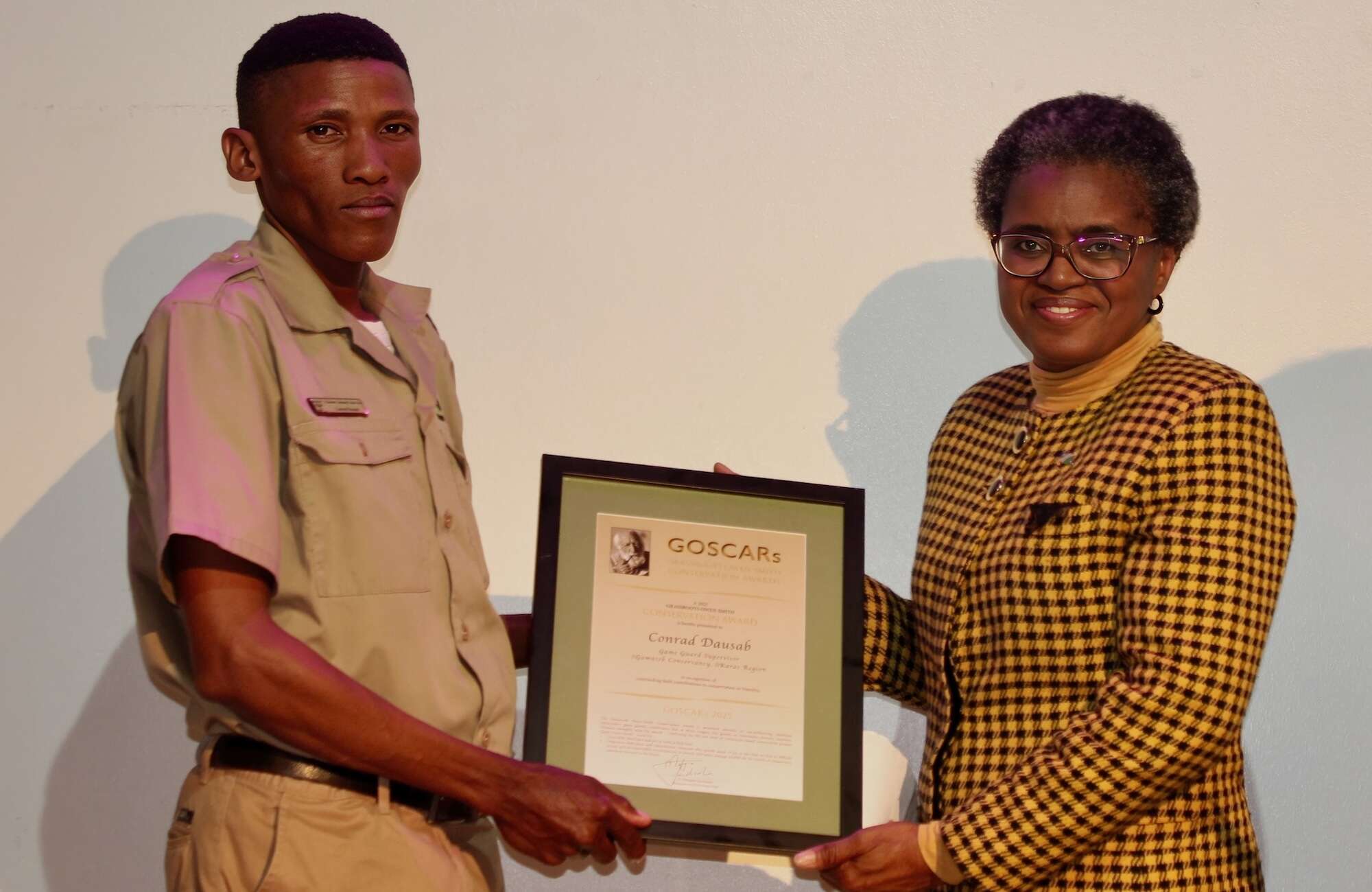
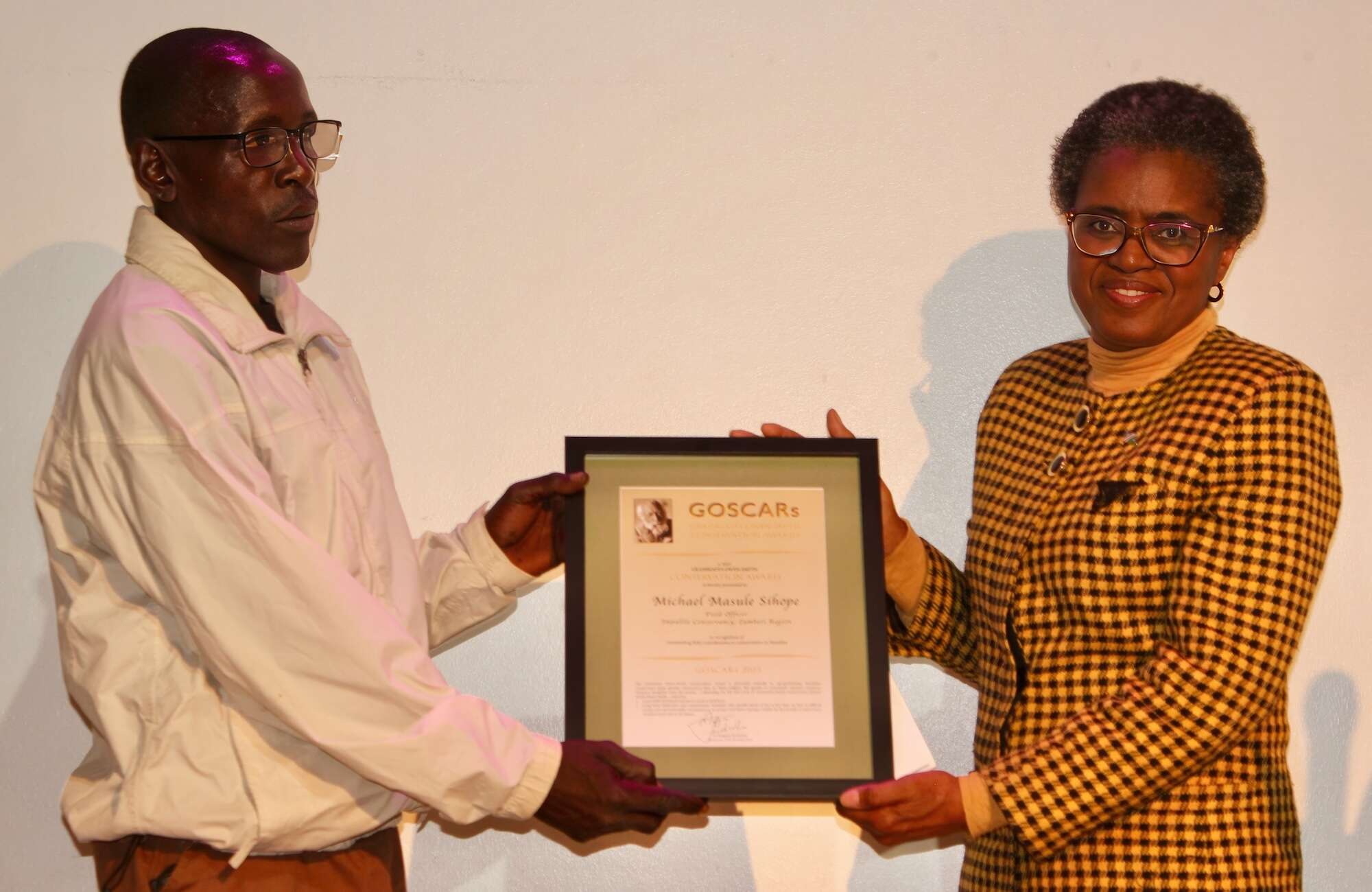
Conservancies in southern Namibia have struggled to achieve the same economic success as their counterparts in the north, since they are far from the normal tourism routes. Consequently, Conrad Dausab worked as an unpaid game guard for //Gamaseb Conservancy in 2017 and has since become the game guard supervisor due to his exemplary work ethic. These southern conservancies protect endemic succulent plant species and fragile ecosystems that deserve more attention from global and national conservation authorities.
On the other side of the country, Michael Masule Sihope works in Impalila Conservancy at the tip of the north-eastern Zambezi Region, touching Botswana, Zambia and Zimbabwe. This area experiences severe human-wildlife conflict, as it is located at the centre of the Kavango-Zambezi Trans-frontier Conservation Area. Michael was recognised for his role in reducing conflict and monitoring the abundant wildlife that uses this conservancy on their journey from one country to another.
The 2025 GOSCARS marked the first ever award for a pangolin guardian, which is a new kind of community game guard working with the Pangolin Conservation and Research Foundation. As a pangolin guardian in Nyae Nyae Conservancy, ‡Oma Sao's duties include raising awareness about pangolin conservation, anti-poaching patrols, rehabilitating pangolins caught in the illegal wildlife trade and assisting with pangolin research. ‡Oma encourages his community to play an active part in conserving pangolins through reporting their sightings and providing information on poaching activities.
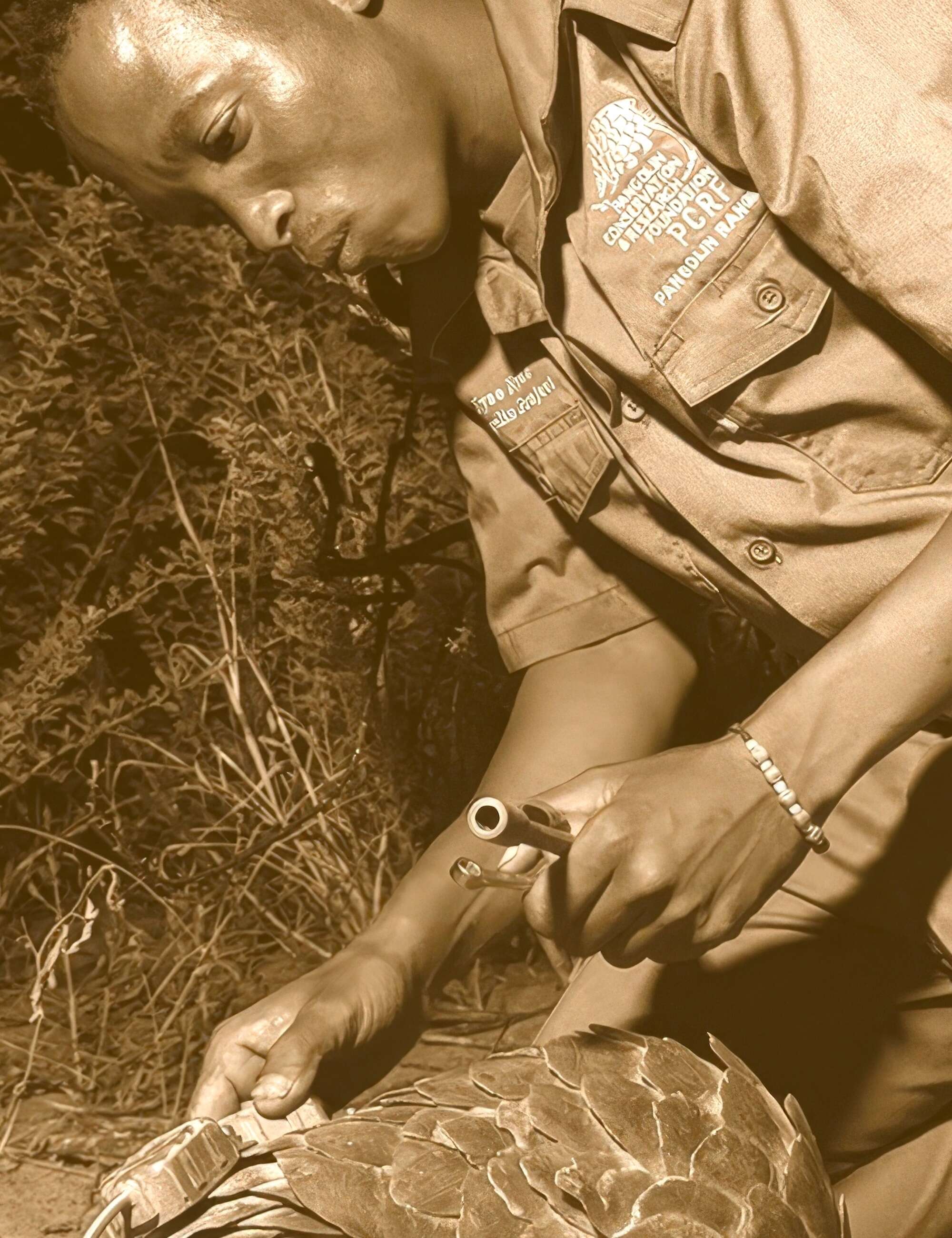
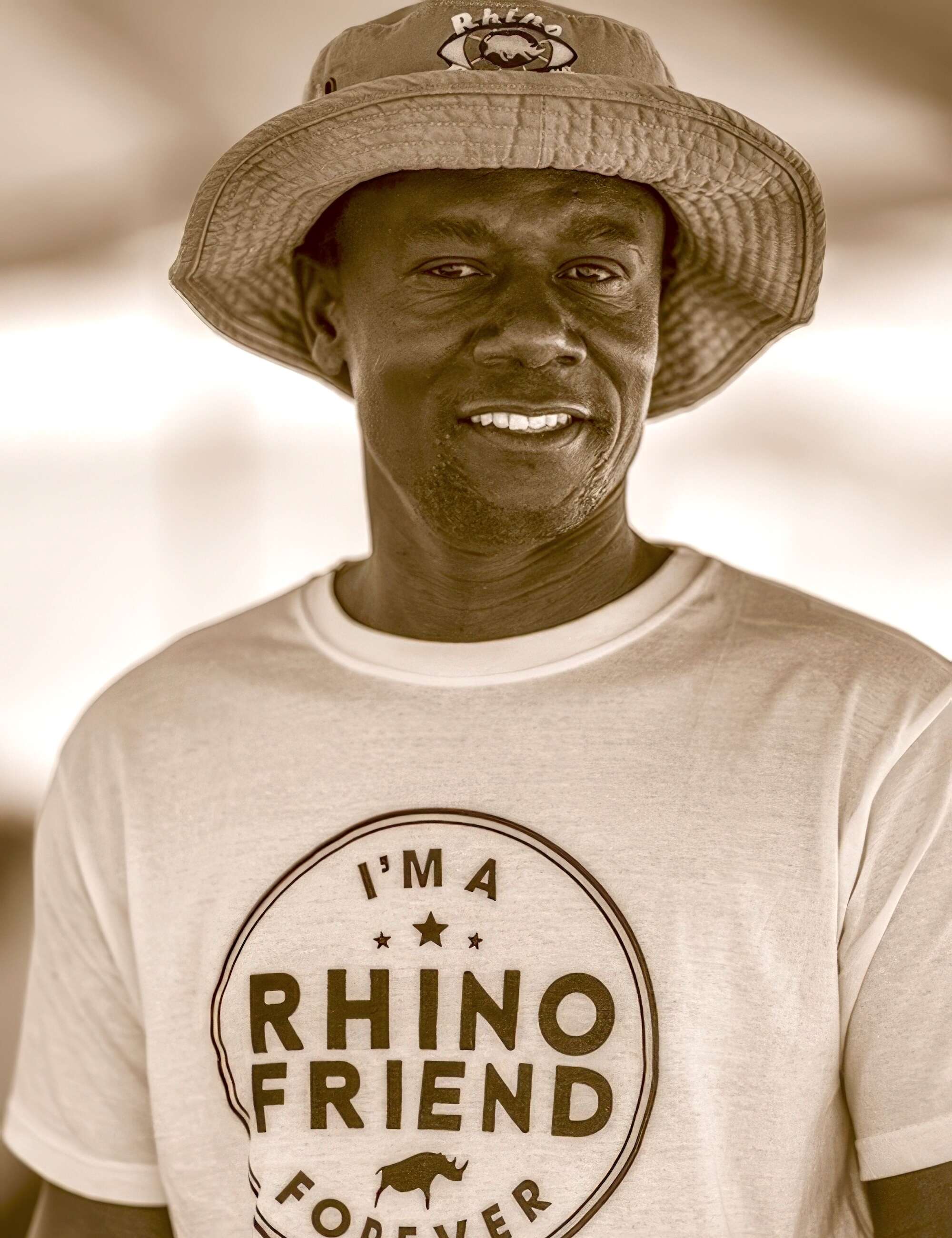
Rhino Rangers have a similarly specialised role in their conservancies, as they work closely with Save the Rhino Trust to monitor these threatened animals. Richard ‘Tensie' Uirab was recognised for his continued monitoring work in Sorris Sorris Conservancy. Since there are fewer rhinos here than in neighbouring conservancies, Tensie doesn't get to record rhino sightings as often as other rhino rangers, yet he continues to walk hundreds of kilometres each year to monitor and protect this endangered species.
GOSCARS Conservancy Award
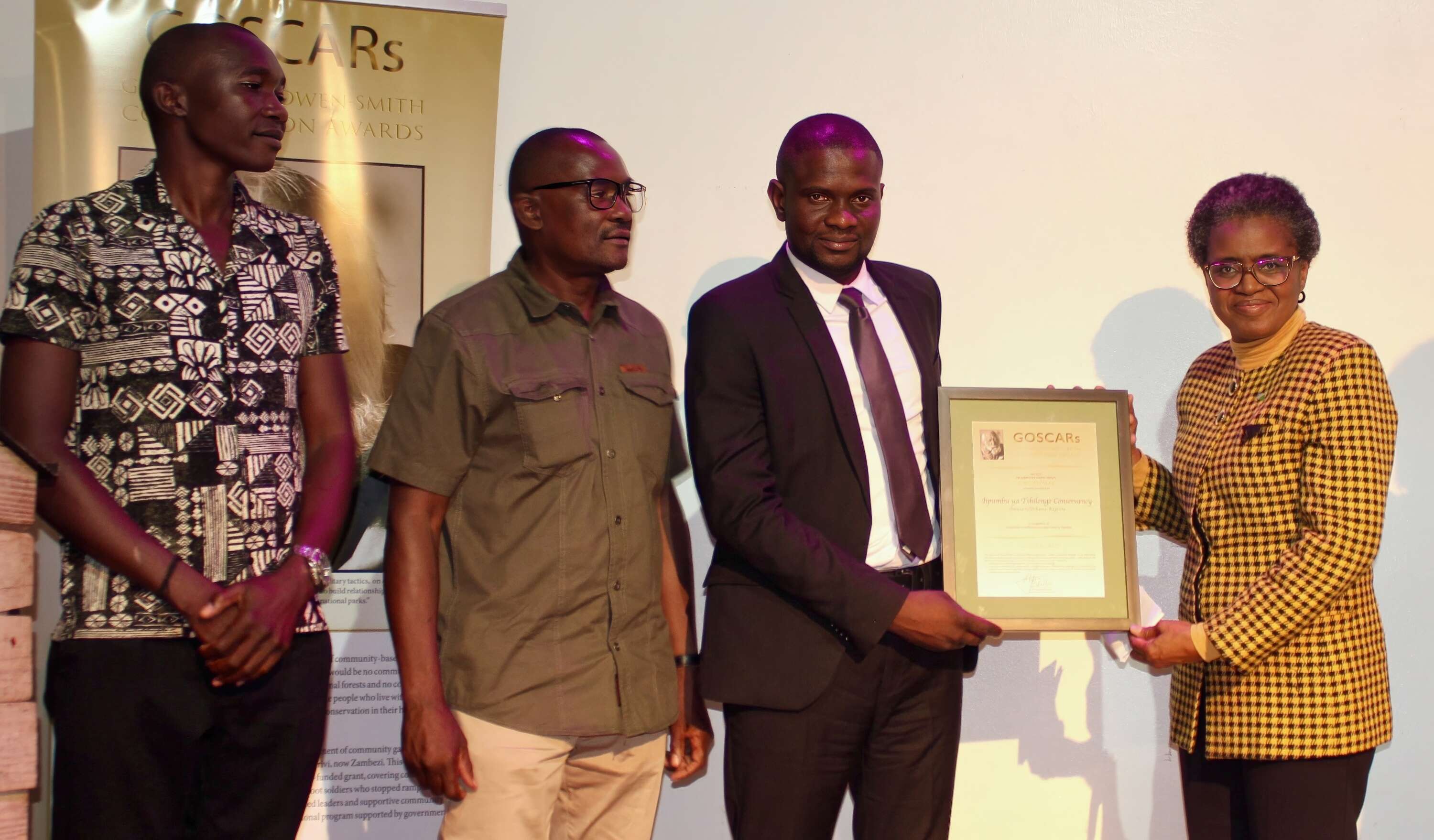
This year the coveted conservancy award went to Iipumbu Ya Tshilongo Conservancy. Despite earning below N$ 1 million per year since their establishment in 2012, this conservancy continues to deliver benefits for its membership while tackling human-wildlife conflict and poaching. Even though this conservancy is located on the border of Etosha National Park, its only income to date has come from conservation hunting, although they are looking to establish some photographic tourism facilities soon.
Iipumbu Ya Tshilongo provides an important conservation buffer area for Etosha. This comes with a cost, however, as predators and elephants that leave the park through its porous fence can cause high livestock losses and other damages on farms. In response, the conservancy has mobilised teams of unemployed youth to help repair the Etosha fence, while equipping their farmers with predator-proof kraals and solar lights to keep predators at bay.
The conservancy leadership has used their income wisely and raised extra funds for community development projects such as a health centre and water infrastructure. Conservancy members have further demonstrated their commitment by reporting illegal entries into Etosha (most likely for rhino poaching) and reducing poaching in their area to a minimum. This conservancy provides an excellent example to others and is therefore a worthy recipient of a GOSCARS award.
New Minister, new horizons
The GOSCARS winners were privileged to receive their awards from the new Minister of Environment and Tourism, Indileni Daniel. This occasion was fitting as Minister Daniel's first public appearance, where she learned about the long history of CBNRM and the role that frontline community rangers have played in its success, then and now. With continued support and recognition from the Ministry and non-government support organisations, community conservation can grow and improve to fulfil the vision that inspired Garth Owen-Smith and those who worked with him.
If you enjoyed this page, then you might also like:
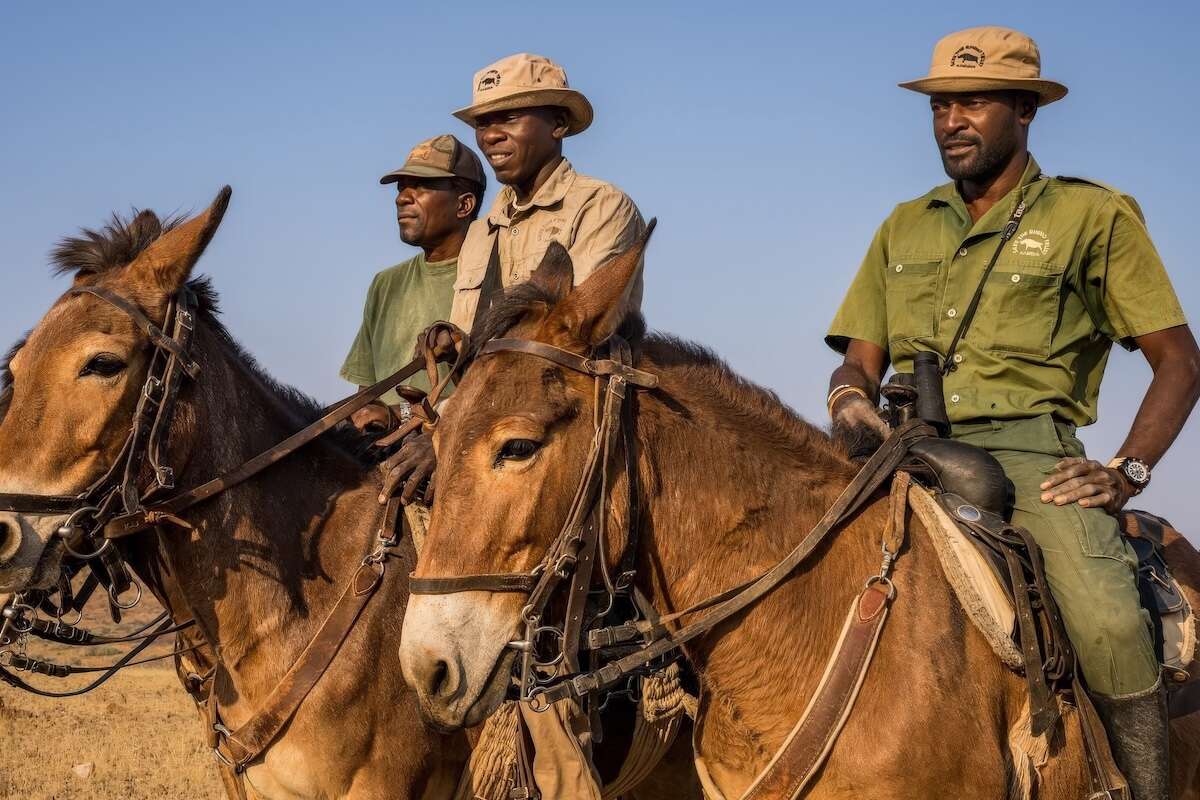
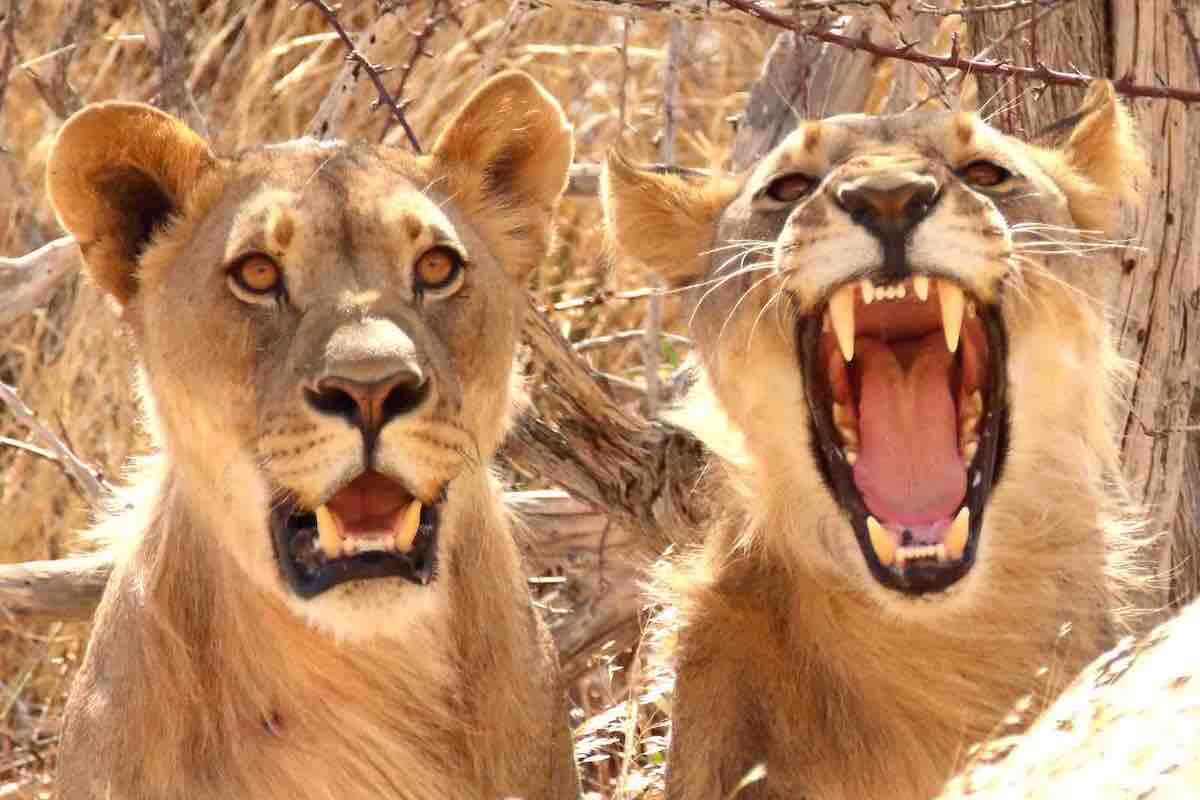
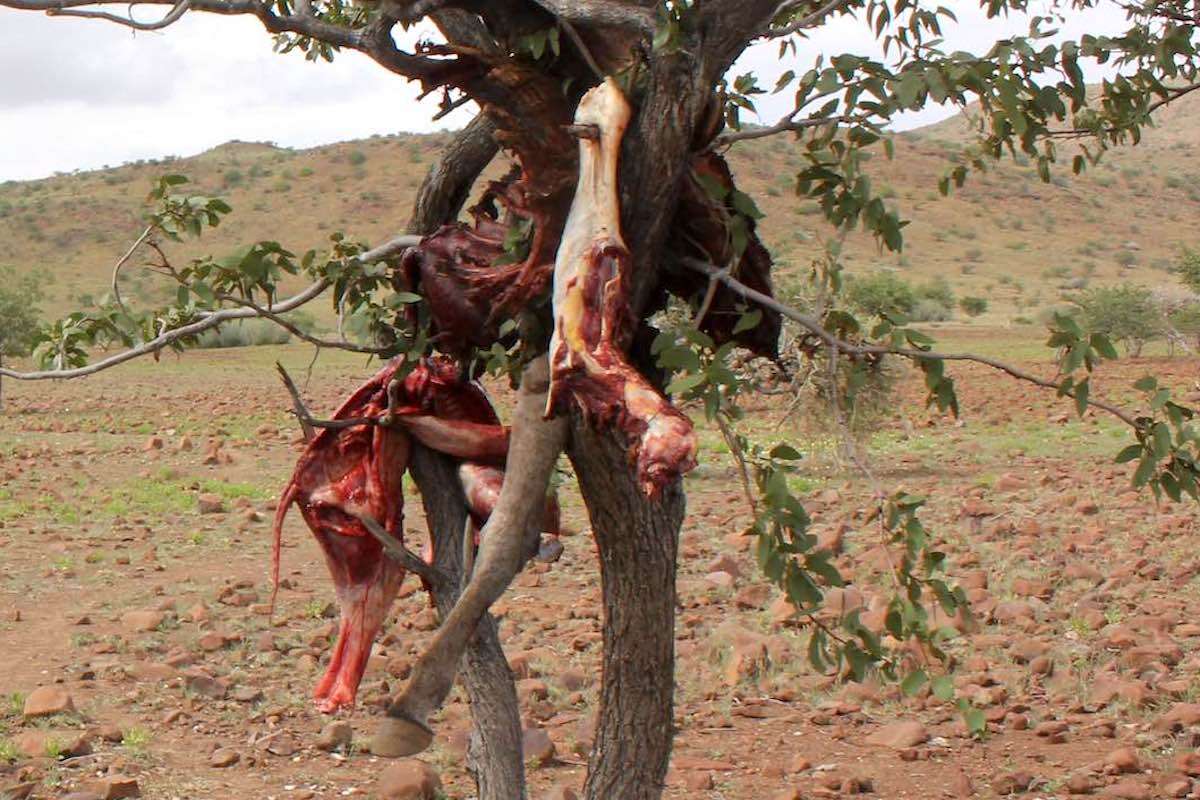
For articles on similar topics, please click one of the following options:

We use cookies to monitor site usage and to help improve it. See our Privacy Policy for details. By continuing to use the site, you acknowledge acceptance of our policy.